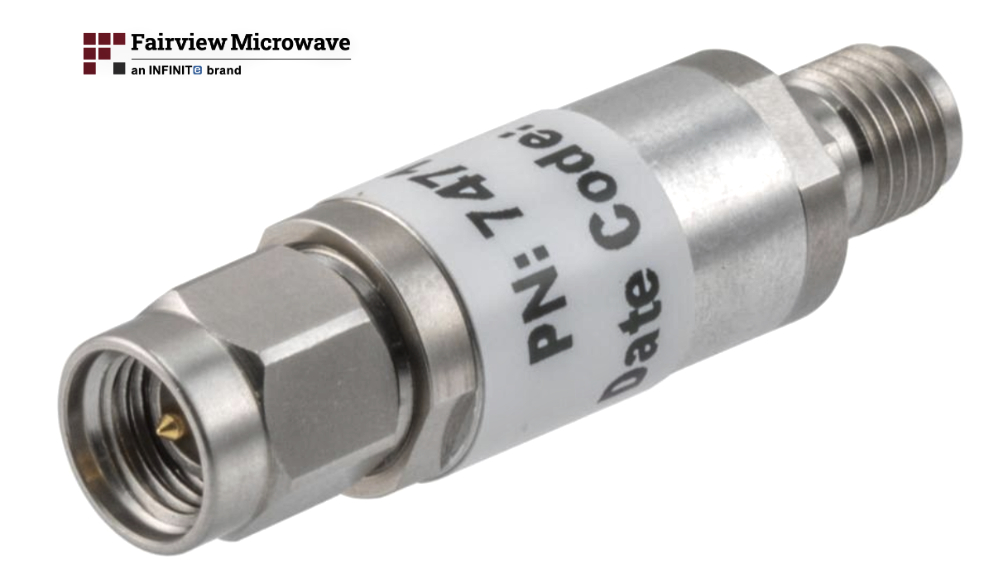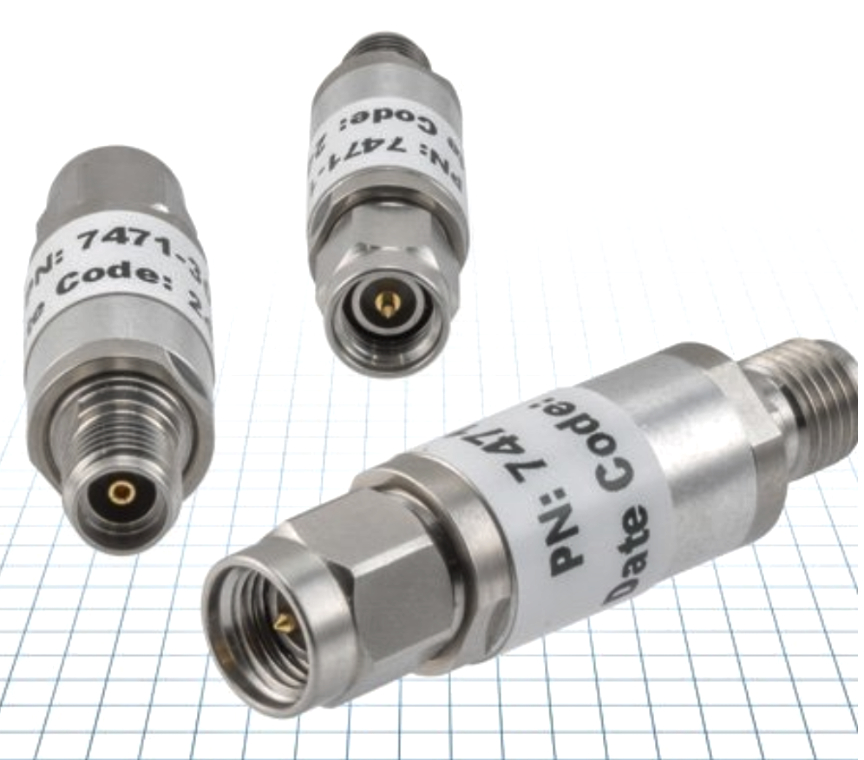
Fairview Microwave has developed a family of fixed attenuators that are useful for a variety of signal conditioning needs in RF systems. Fixed RF attenuators can be used to provide high precision and known attenuation of incoming signals that may exceed the input requirements of devices like sensitive receivers or mixers or can be used to minimize the standing waves developed between mismatched impedances.
In test and measurement applications or millimeter-wave (mm-Wave) communication and sensing, fixed attenuators are key elements used during prototype testing/development, quality/verification, troubleshooting, or even integrated in systems. RF Fixed Attenuators with 3.5mm Connectors are ideal mm-Wave coaxial attenuators as the 3.5 mm connector is specified to 26.5 GHz but can be used functionally as high as 33 GHz or 34 GHz.

3.5mm connectors are mating compatible with SMA connectors, though SMA connectors typically have a much lower frequency limit, even with precision design units. The specified frequency range of 3.5mm connectors covers the HF, VHF, UHF< L, S, C, X, Ku, and nearly all of the K-band. However, 3.5mm connectors will also operate to much of the Ka band. If operating a 3.5mm RF fixed attenuator out of the specified range, the attenuation level, VSWR, power handling, and other performance criteria may be degraded somewhat in the higher frequency regime.
A benefit of fixed, coaxial attenuators is that they can be made to be installed inline with the coaxial interconnect. An inline design mitigates the need to design a specific place to secure a mountable attenuator and can even be installed on bulkhead ports internally or externally to housing or shielding. Since inline fixed attenuators tend to be compact, often not much larger than the coaxial connector itself, these units tend to have lower power handling than coaxial attenuators with integrated heatsinks or other thermal management features.
Often 1 to 2 Watts of power handling is adequate for a mm-Wave inline attenuator operating in the K-band, as modern communications and sensing applications at these frequencies now tend to rely on advanced/active antenna array (AAS) technology, such as phased arrays and switched arrays that have the signal power divided amongst several signal paths. With low enough fixed attenuators it is also possible to use these inline attenuators to equalize the attenuation between several signal paths of varying lengths, though phase correction will still need to be provided with additional hardware.
Article author: by Peter McNeil, Fairview Microwave
